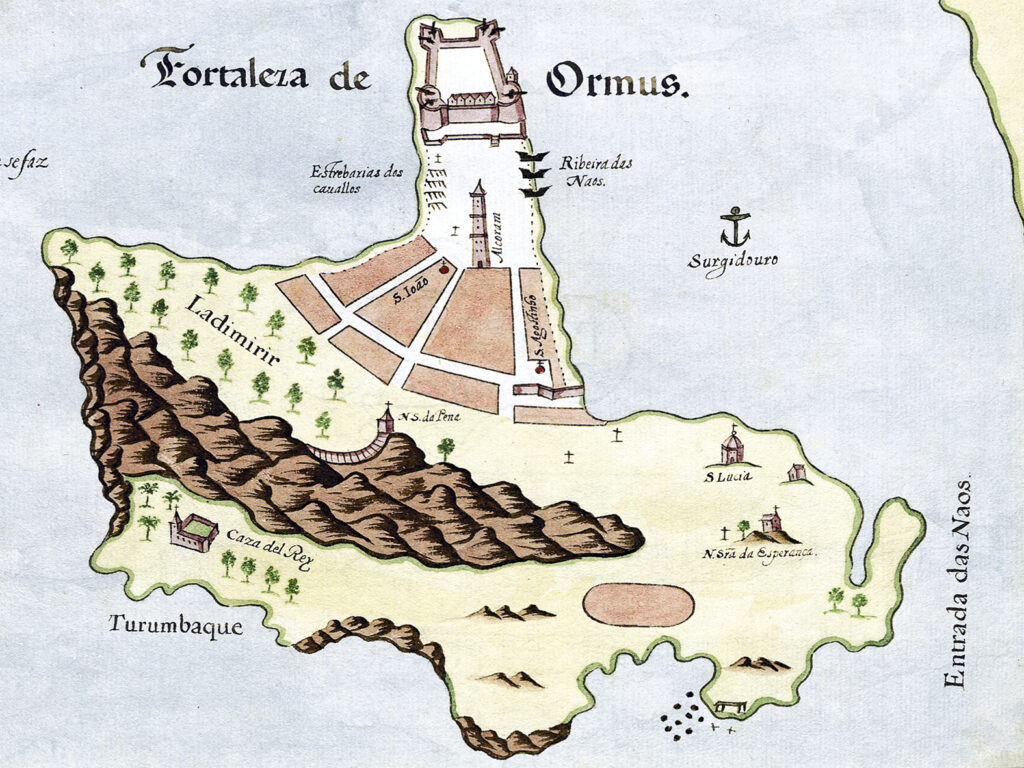(Hormoz, Ormus, Hormuz, Hormus)

Fortaleza de Ormus, ca. 1648, detail (João Teixeira Albernaz, Plantas das cidades, portos e fortalezas da Conquista da India Oriental, ca. 1648, Cod. Icon. 162, Bayerische Staatsbibliothek, Munich, available at: link)
Hormuz: the Jewel on the Arid Ring
The Kingdom of Hormuz established itself as a maritime power in the Persian and Oman Gulfs at the end of the medieval period, with its epicentre in the city and island of the same name in the narrow strait between the two gulfs. The Portuguese presence, described as a protectorate, lasted from 1515 until 1622, and during this period, Hormuz was the main gateway to the Persian Empire and the Safavid court. The urban and rural landscapes of the city and island have been described by various travellers and show a range of adaptations by the population of Portuguese origin – a minority – to the pre-existing Islamic reality and culture. The archaeological and tourist interests on Hormuz have fuelled various studies and projects throughout the 20th century that should be compared, thus rescuing the memory of one of the most unlikely encounters between cultures in the Indian Ocean during the 16th and 17th centuries.
